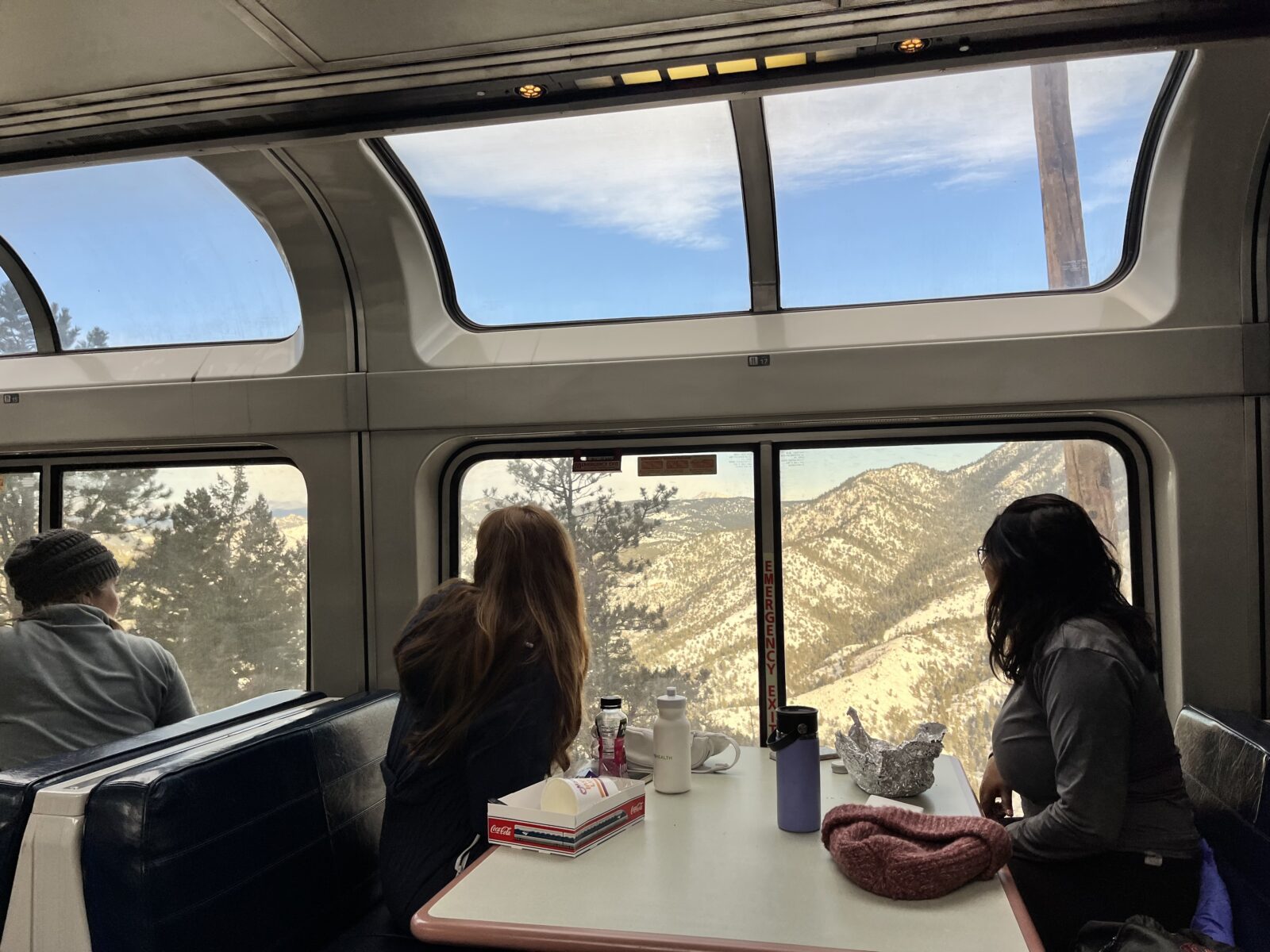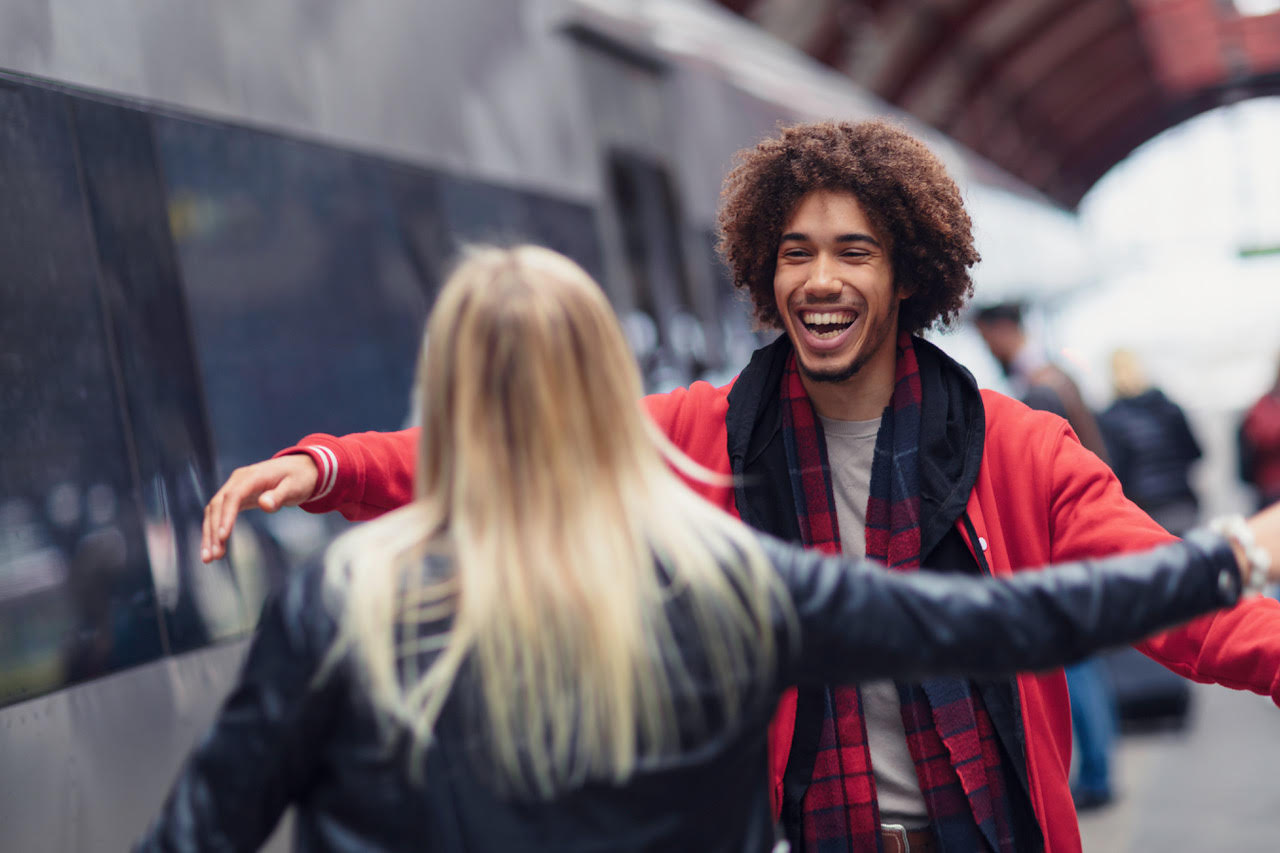This week, US Transportation Secretary Sean Duffy announced major shifts in direction for two important projects. As advocates for quality trains, we need to speak up for the changes we want to see. Amtrak out at Texas Central On Tuesday, Sec. Duffy announced that...
Guest blog by Sami Tellatin
This February, I took the Amtrak Winter Park Express Train from Denver to Winter Park to enjoy some ski adventures. The experience was easy, beautiful and fun, and serves as a case study in how increased transit options could help reduce traffic-related challenges along the Colorado Rocky Mountains.
I live in Denver due to its proximity to the Rocky Mountains and the epic adventures they afford all year long. If you’ve visited the Mile High City, you’ll know that Denver is located at least an hour or more away from most great hikes. The main artery connecting Denverites with nature’s abundant adventures is Interstate 70. In the winter time, the interstate fills with vehicles making their way to and from the ski resorts sprinkled along the way, including popular spots like Keystone, Arapahoe Basin, Copper Mountain, Vail and Winter Park. If you’re headed up for a ski day, it’s common to experience hours of traffic. A 1.5 hour drive can quickly turn into 3+ hours of traffic when snowy conditions and heavy demand clog the interstate.
One resort, Winter Park, falls along an Amtrak train route, so Amtrak offers a ride called the “Winter Park Express” that presents a viable alternative to driving your car. The route runs from Denver’s Union Station to Winter Park Resort, dropping passengers off right at the main resort building at Winter Park base.
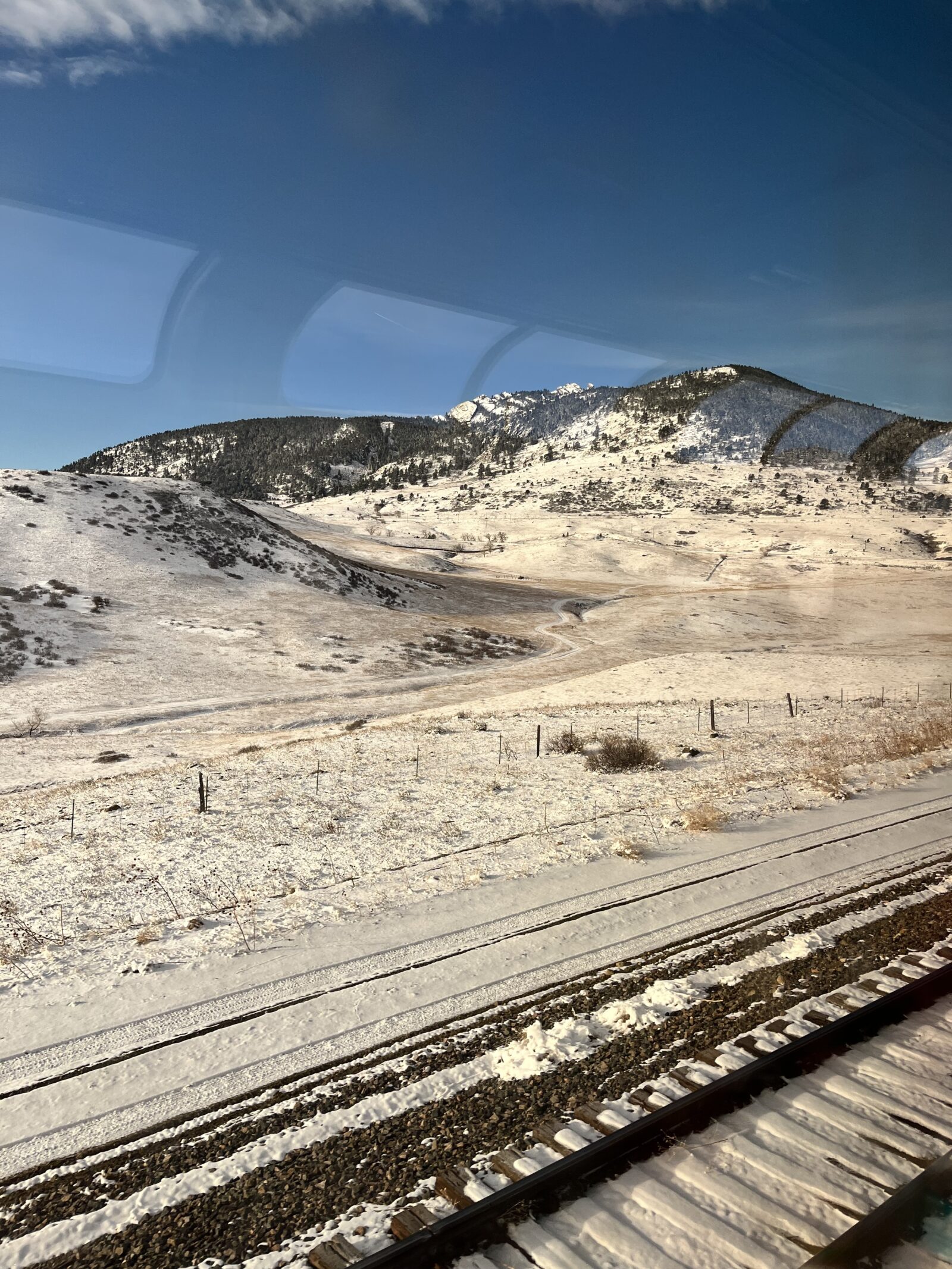
The Route
Taking a little over two hours, the Winter Park Express route runs from Denver through the foothills, where you can see coyotes roaming across the landscape (I saw five on my morning trip). It cuts up into the Rocky Mountains and takes passengers through beautiful rock formations and mountain valleys where a herd of yaks (hairy cows) roam. Finally, the train passes underneath Moffat Tunnel and stops at Winter Park Resort.
The train leaves at about 7AM from Union Station and arrives at the resort by 9:15AM. Passengers can store their ski and snowboard gear in lower level storage areas, a process that is facilitated and managed by volunteers.
The train then departs back to Denver at 4:30PM from the resort, getting folks back to Union Station by 7:00PM.
In comparison, the drive from downtown Denver to Winter Park resort takes about 1.5 hours (oftentimes more due to traffic). The drive involves going along i70 and turning off at US Route 40 to drive over Berthoud Pass, which can be a slow journey in snowy or crowded conditions. The pass is closed at least a few days every winter due to avalanche conditions. Traffic-wary drivers like myself will often leave Denver early (5AM) on a weekend to ensure a short drive time and a good parking spot at the resort. A typical schedule for the drive might be: leave Denver at 5AM, arrive at Winter Park at 6:30AM, lounge until the lifts open at 8:30AM, and drive back to Denver in the afternoon (crossing your fingers that you don’t run into traffic).
The Experience
Buying tickets: The ticket purchase process is super easy using the Amtrak mobile app or online web app. This year, tickets were subsidized to be only $19 one way. I used the mobile app to buy my tickets, selecting the day (the train only runs from Thursdays – Mondays) and choosing my seat preferences. I wasn’t able to reserve a specific seat, but I could select the upper or lower level of the train. I chose the upper level and would definitely recommend that.
Boarding: I arrived at Union Station at 6:30AM, about 30 minutes before the train’s departure time. This ended up being a pretty conservative approach; I saw folks coming in 5-10 minutes before departure, too. One person in my group hadn’t purchased a ticket online yet, so he approached the ticket kiosk about 10 minutes before departure and snagged a ticket easily.
I found the boarding process to be easy – the volunteers open the train up about 15-30 minutes before departure from Union Station. Volunteers were on the train platform to guide us; they asked us how many we had in our party and helped direct us to train cars. They loaded our skis and snowboards onto the storage carriers on the lower level of the train, and then directed us to a car. Each car is given an animal name – like Fox and Moose – which is a pretty cute detail (we were assigned to Fox car).
On the return trip from Winter Park to Denver, the train was delayed quite a bit due to other train traffic through the surrounding area. It shares the tracks with some mainline Amtrak trains and cargo trains. We ended up waiting about 30 minutes past the original departure time to take off, and got back to Denver about 20 minutes later than anticipated.
En Route: Once we were on board, we wandered to the upper level to pick our seats. Seats are structured as pairs on each side of the train, and some seats will face each other whereas others might only face one way. For groups, it’s pretty easy to find seats next to each other, which is what we did. We were a group of five, so we picked a group of four seats with the pairs facing each other and then the fifth person hung out in a seat pair behind. All seats include reclining features including seat back reclining and foot rests that pop out. There are big windows that allowed us to take in the sights along the way.
We were hungry and thirsty, so we wandered back to the cafe car pretty early on in the journey. The cafe car was beautiful, and ultimately we just hung out there for most of the ride. It has huge panoramic windows on the sides of the car and windows in the roof / ceiling to get even better lighting and views. There are dining tables with bench seats where groups can lounge and play card games (if you bring cards!), drink, eat snacks and chat. We sat at a table and chatted for the entire ride, looking out the windows at the wildlife (coyotes and yaks!) and going back and forth from the cafe itself to refill on snacks and coffee.
The cafe itself includes some basic snacks like chips, pretzels, rice krispy treats and instant noodles, as well as drinks ranging from cocktails to coffee and hot chocolate. You can pay via card, mobile wallet or cash.
Bathrooms are located on the lower level of each car. They’re nothing fancy but felt overall clean and convenient.
I had cell service for the first hour of the ride, and then lost it as we got into the mountains. There is no wifi on board, but it’s nice to be encouraged to just be present on the beautiful ride.
The volunteers on board are very kind and supportive. They often know facts about the route and are very well informed about travel timing and logistics. During our ride, the train manager would often speak over the microphone to point out landmarks and wildlife and to update us on the journey timing. He also used the train passengers as his personal standup comedy audience, so be prepared for some bad puns.
When the train arrived at Winter Park, the volunteers let us know that we could leave personal items on the train to save our seats (just not anything valuable). The train is only intended for the trip to and from Winter Park, so it just sits at the station until the end of the day. This was convenient as we had changes of shoes and clothes that we could leave parked on our seats while we skied.
Overall, I had a wonderful experience aboard the Winter Park Express. It was incredibly relaxing compared to driving to and from the resort. I was able to read, listen to music, chat with friends, nap and lounge during the journey. The volunteers and staff were incredibly friendly, and the windows allowed for novel, beautiful views of the foothills and mountains.
I hope that Amtrak expands the service to include all days of the week, and offers a summer service as well for cyclists. I also hope that the local governments across the Rockies consider opening up and investing in even more train infrastructure to and from mountain resorts to eliminate congestion and traffic danger on the interstates. How great would it be if instead of honking at each other and emitting greenhouse gases every weekend, we were all lounging side by side in a beautiful train car trying to spot coyotes while sipping on hot chocolate?!
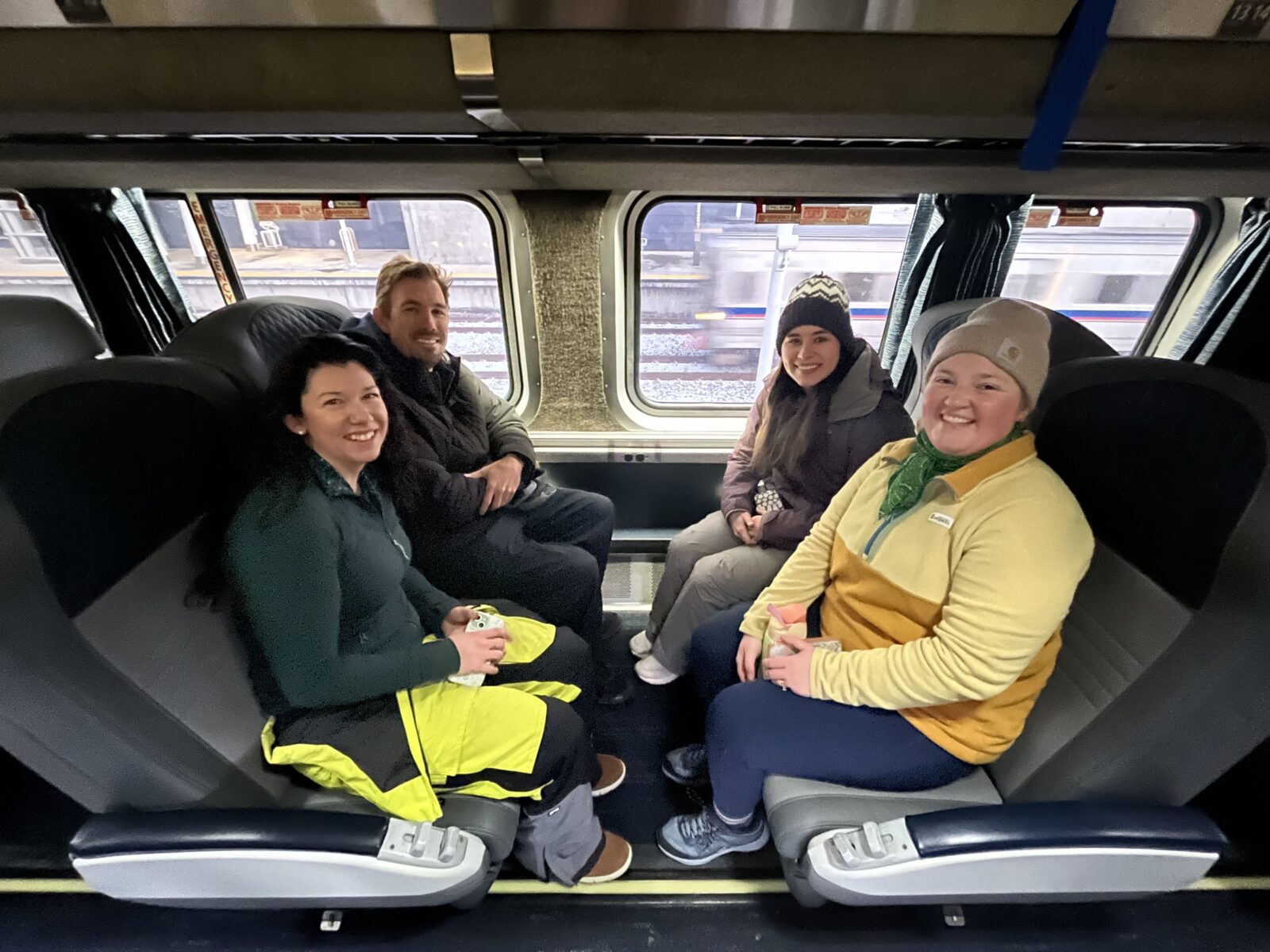
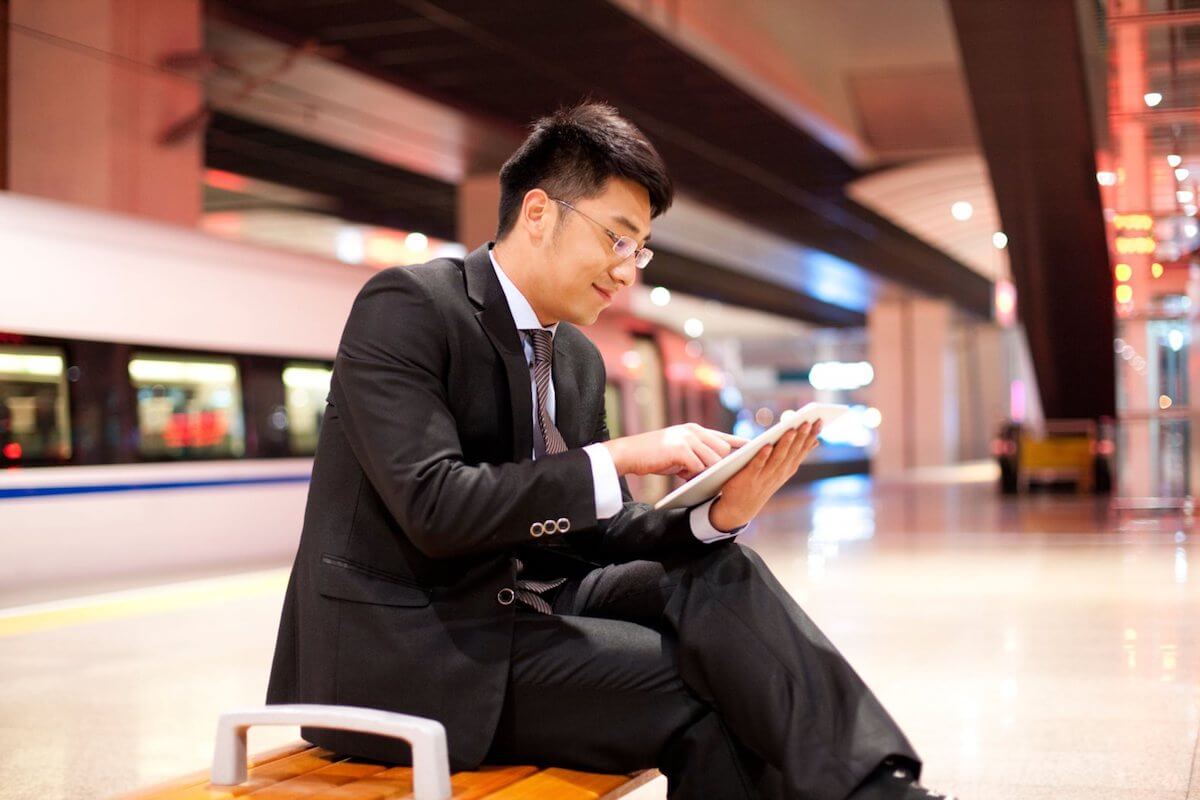
Get Involved
Tell the United States Congress: It’s time to reconnect the country with high-speed and regional rail!
The Latest from HSRA
Our Latest Blog Posts
Check out the latest news, updates, and high speed rail insights from our blog!
